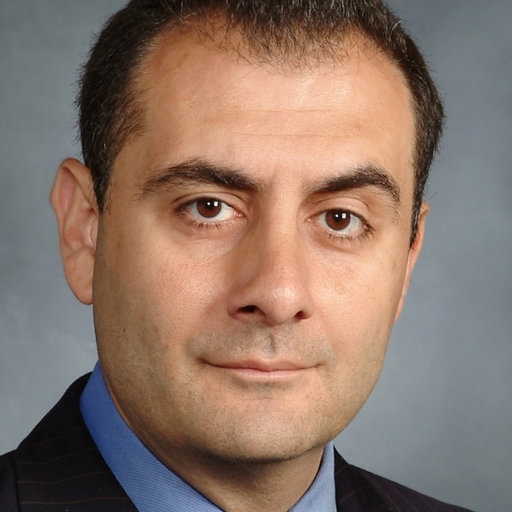Study Shows Anthocyanin-Rich Purple Corn Extract Can Lower High Blood Pressure
Adult patients with untreated mild to moderate hypertension may need to look no farther than a natural compound found in plants to lower their blood pressure.
Anthocyanins, water-soluble pigments found in many plants that may appear red, purple or blue depending upon their pH value and the presence of co-pigments, have long been linked to the prevention or delay of the onset of medical conditions including degenerative diseases of aging, cardiovascular disease, diabetes, cognitive dysfunction and cancer.
But a new study from an international team of researchers, led by Dr. Madelon Finkel of Weill Cornell Medical College, and published in the Journal of Evidence-Based Complementary & Alternative Medicine, shows that this natural compound may also keep high blood pressure in check for patients who have hypertension but aren't taking medication to treat it.
To discern the benefits of anthocyanins, Dr. Finkel, professor of clinical public health, and her team conducted a small-scale pilot study of 30 patients in Peru who had untreated mild to moderate hypertension. The study, which was piloted at Dos de Mayo Hospital, a teaching hospital of San Marcos Medical College — an institution with which Weill Cornell conducts student exchanges and collaborative research — sought to empirically examine whether taking a concentrated dose of anthocyanin would have an effect on blood pressure.
Over the course of three weeks, researchers provided study participants with capsules containing the extract of purple corn, a variety of corn which is cultivated in Peru and known as chicha morada, is a staple in the Peruvian diet and has the highest concentration of anthocyanins. Researchers found that the purple corn extract capsules had a beneficial effect of reducing participants' blood pressure by the end of the study.
While researchers caution that the study, given its small scale and short time period, does not conclusively show the benefits of anthocyanins on high blood pressure, the results are intriguing and warrant additional study.
"Further study on a larger sample and for a longer period of time would help further clarify the role of anthocyanins in lowering blood pressure," said Dr. Finkel, professor of clinical public health at Weill Cornell. "But, just eating foods rich in anthocyanins will probably not make a difference in most people.
"We had our subjects take daily capsules of purple corn extract, thus they were getting a more concentrated dose as opposed to eating anthocyanin-rich foods (berries, eggplant, and other foods with dark co-pigments)," she added. "Relying on anthocyanin-rich foods as a means of lowering blood pressure for those with hypertension is not advised. Medication is warranted for these individuals. But, if someone has mild-moderate blood pressure readings and is not on medication, perhaps a trial of purple corn extract capsules might help keep blood pressure within a normal range. We selected subjects with no serious co-morbid conditions. Discussion with one's physician is crucial, of course."
New Technique for Diagnosing and Treating Conditions of the Biliary or Pancreatic Ductal System Safe and Effective for Pregnant Women
Pregnant women have long dreaded the diagnostic and therapeutic technique for gall stones, strictures, obstructions or other conditions with the biliary or pancreatic ductal systems due to their and their fetuses' exposure to radiation.
But perhaps for not much longer.

Dr. Michel Kahaleh
A team of researchers at Weill Cornell Medical College led by Dr. Michel Kahaleh, chief of endoscopy and professor of clinical medicine, have successfully modified the diagnostic technique, endoscopic retrograde cholangiopancreatography (ERCP), to reduce the estimated fetal radiation exposure, thereby making the procedure safe for pregnant women. A study published this spring in World Journal of Gastrointestinal Endoscopy reported the safety and efficacy of this procedure.
ERCP is a technique that combines the use of endoscopy and fluoroscopy to diagnose and treat gall stones, strictures or obstructions of the bile or pancreatic ducts, and other conditions. Fluoroscopy is an imaging technique that uses X-rays to obtain real-time moving images of the internal structures of a body and is the source of the radiation exposure.
Dr. Kahaleh and his colleagues modified the existing technique to limit radiation exposure to pregnant women and their fetuses to just 9 seconds. The modified procedure includes access and insertion of the endoscope into the bile duct — with correct position of the catheter confirmed by aspiring bile — followed by cutting or separating the sphincter prior to use of any fluoroscopy.
To test the safety and efficacy of this modified procedure, the researchers followed 35 pregnant patients — 14 in the first trimester, 11 in the second trimester and 10 in the third trimester — over eight years. All procedures were completed successfully with complications observed within the normal range, the researchers reported. Only one patient required additional surgery due to gallbladder inflammation. The estimated fetal radiation exposure using this modified technique was significantly less than the original procedure.
"The study concluded that ERCP with modified techniques is safe during pregnancy," Dr. Kahaleh said.

